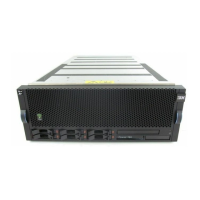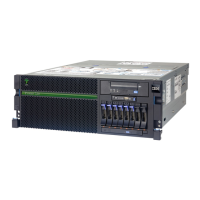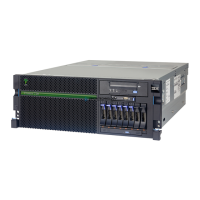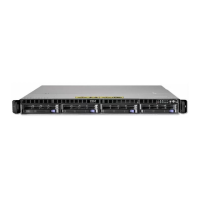Chapter 2. Architecture and technical overview 47
2.1.6 POWER7+ processor and Intelligent Energy
Energy consumption is an important area of focus for the design of the POWER7+ processor,
which includes Intelligent Energy features that help to dynamically optimize energy usage and
performance so that the best possible balance is maintained. Intelligent Energy features, such
as EnergyScale, work with IBM Systems Director Active Energy Manager to dynamically
optimize processor speed based on thermal conditions and system utilization.
2.1.7 Comparison of the POWER7+ and POWER6 processors
Table 2-2 shows comparable characteristics between the generations of POWER7+ and
POWER6 processors.
Table 2-2 Comparison of technology for the POWER7+ processor and the prior generation
POWER7+ POWER7 POWER6+
Technology
32 nm 45 nm 65 nm
Die size
567 mm
2
567 mm
2
341 mm
2
Maximum cores
882
Maximum SMT
threads per core
4 threads 4 threads 2 threads
Maximum frequency
4.4 GHz 4.25 GHz 5.0 GHz
L2 Cache
256 KB per core 256 KB per core 4 MB per core
L3 Cache
10 MB of FLR-L3 cache
per core with each core
having access to the full
80 MB of L3 cache,
on-chip eDRAM
4MB or 8MB of FLR-L3
cache per core with
each core having
access to the full 32 MB
of L3 cache, on-chip
eDRAM
32 MB off-chip eDRAM
ASIC
Memory support
DDR3 DDR3 DDR2
I/O bus
Two GX++ Two GX++ One GX++
Enhanced cache
mode (TurboCore)
No Yes
a
a. Not supported on the Power 770 and Power 780 4-socket systems.
No
Sleep and nap mode
b
b. For more information about sleep and nap modes, see 2.14.1, “IBM EnergyScale technology”
on page 115.
Both Both Nap only

